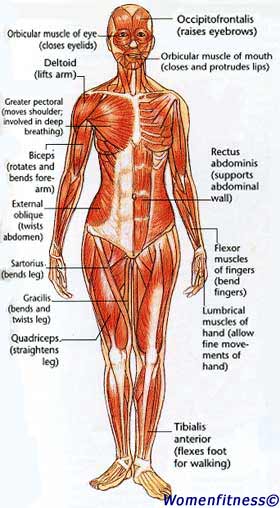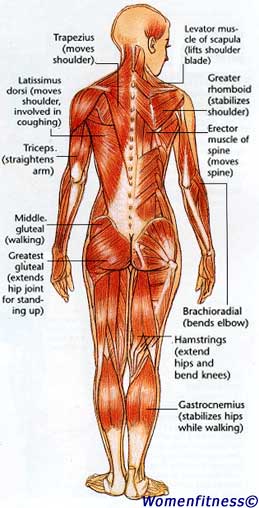Muscle Map

The muscular system is a system of tissues - called muscles -
throughout the body which allow you to move. Most of the muscles
in the body are under conscious control and are moved by
commands sent to the muscles from the brain via the nervous
system. However, some muscles (such as the cardiac muscles) are
involuntary - that is, they move regularly without any conscious
control. Except for the involuntary muscles, muscle fibers are
connected to the skeletal system by tendons and other tissues;
the muscles exert force by converting chemical energy into
tension and contraction. Muscles are made up of millions of tiny
protein filaments which work together to produce motion in the
body. They move and make us capable of a variety of actions by
simply contracting and becoming shorter or by relaxing and
becoming longer. Muscles pull, but they cannot push.
Each person has over six hundred muscles; these are served by nerves which link each individual muscle to the brain and spinal cord. Our bodily needs demand that muscles accomplish different chores, so we are equipped with three types of muscles. Cardiac muscles, found only in the heart, power the action that pumps blood throughout the body. Smooth muscles surround - or are part of - the internal organs. Both cardiac and smooth muscles are called involuntary muscles, because they cannot be consciously controlled. The skeletal muscles are the third muscle type. These carry out voluntary movements and are what ache after strenuous exercise. Skeletal muscles are the body's most abundant tissue, comprising about 23% of a woman's body weight and around 40% of a man's body weight.
Muscle Map below provides information about each muscle group, its exact location, functions and common activities that the muscle is used for, including the best strength training exercises for that muscle. You'll find instructions for strength training exercises in the Exercise section to workout different muscles of your body.
  |
